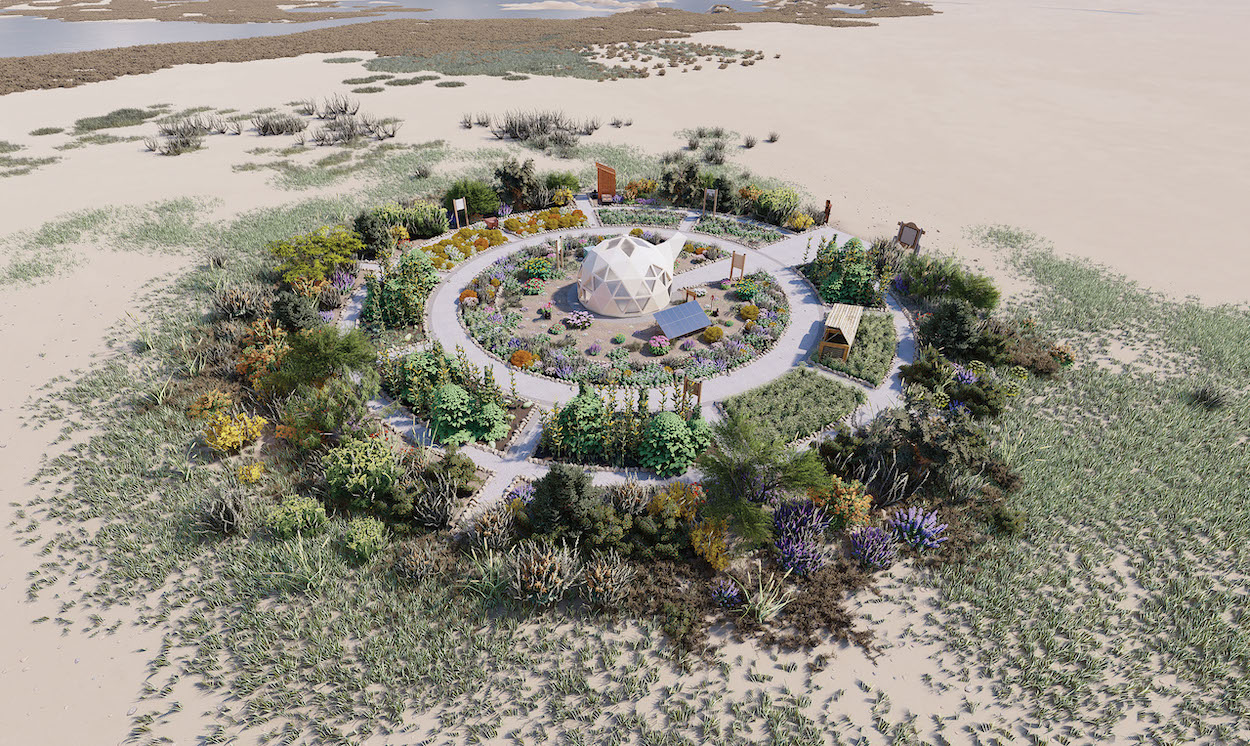Last year, the coronavirus pandemic forced Burning Man to cancel its highly anticipated annual event near Black Rock City, Nevada. The festival, which sees more than 70,000 attendees (“burners”) build a temporary city in the sweltering desert and which culminates the burning of a large wooden effigy known as “the Man” in a symbolic act of self-expression, still faces uncertainty this year as questions about in-person gatherings remain. That hasn’t deterred the event’s organizers, who are now planning to build a sustainable city in the desert.
In 2016, Burning Man organizers bought Fly Ranch, a 3,800-acre compound near Black Rock City with the idea of creating a year-round sustainable space. They soon partnered with the Land Art Generator Initiative (LAGI) and launched a global competition for burners to share their own visions for Fly Ranch. Teams were asked to integrate sustainable systems for energy, water, food, shelter, and waste management into what the organizers deem “works of art in the landscape” that support the event’s 2030 sustainability goals.
“This design challenge [was] an invitation to artists, architects, designers, builders, scientists and burners of all kinds to come together and create a collective project that lasts beyond a week in August,” said the organizers. “Through art, technology, and innovation, Fly Ranch will bring together sustainable and scalable solutions for power, water, shelter, food, and regeneration in the Black Rock Desert.” Organizers selected ten winners, each of whom will receive grants to realize their prototypes. Each proposal prioritizes sustainability: one uses ferrock as a green alternative to concrete, another employs recycled solar photovoltaic materials to make electricity, and another features a bioceramic dome that incorporates drip irrigation, composting toilets, and seed banks.
Fly Ranch is slated to become an incubator for the developing field of regenerative design that’s at least worth following. Perhaps it’s high time to plan a pilgrimage out West.


